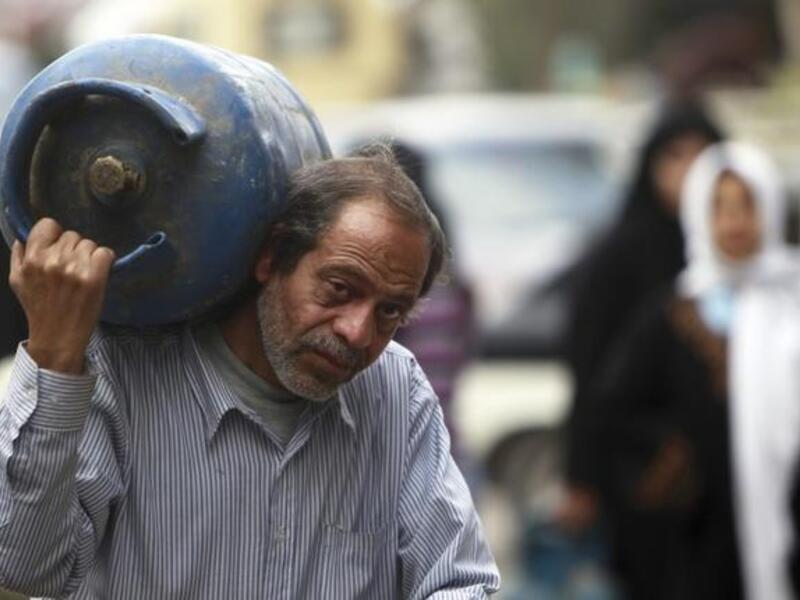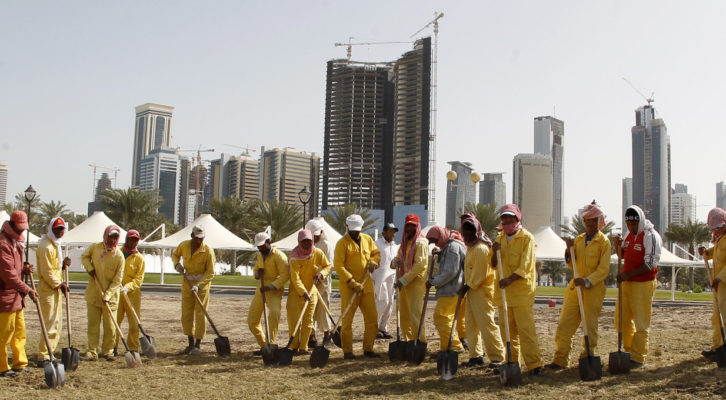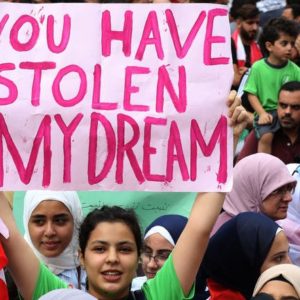“Come to me, all who labor and are heavy laden, and I will give you rest” Matthew 11-28
Today, we welcome the International Workers’ day with these words, which infrequently accompany such occasions in general, given its current surrounding environment is exceptional if not unusual with the world at large afflicted with a pandemic impacting if not threatening all aspects of peoples’ lives including and foremost workers’ daily life.
Spiritual opening of this international occasion, which was originally initiated to promote the mundane rights of the workers, gains relevance given the current emotionally overloaded circumstances of the workers’ lives generates both worldly and spiritual outcomes and attention.
On May 5, 1886, labor demonstrations took place at Haymarket square in Chicago demanding an eight-hour workday.
In 1894, the USA federal civil holiday Labor Day was established to recognize the hard work, sacrifices, and contributions of works albeit on the first Monday of September.
In 1904, the sixth conference of the Second International Socialist Congress adopted the May Day in commemoration of the Haymarket affair.
In 1918, May 1 became an important public holiday, known as the Day of the International Solidarity of Workers in the Soviet Union.
In 1955, the feast of St. Joseph the Worker on May 1 was introduced by Pope Pius XII that also serves as Labor Day as an alternative to the worldwide Communist-sponsored May Day celebrations. It honors workers and highlights the dignity of human work.
In 1992 after the collapse of the Soviet Union, the Russian parliament retained the holiday as Spring and Labor Day.
While the USA and Canada have their Labor Day on the first Monday of September, more than 80 countries celebrate International Workers’ Day on May 1.
Throughout the years, much has been accomplished towards enhancing workers’ rights. Conservatives, liberals, socialists, communists, in addition to religious people, all met in advocating the rights of workers and improving workers’ working milieu.
Today, workers’ day celebration already assumed globally with different “thank you” gestures by peoples in lockdown who expressed their appreciation, gratitude, and respect for the health sector workers (all the staff of health institutions: nurses, doctors, hygiene workers, inter alia), security and military personnel.

The unparalleled success of the relevant workers in Arab cities e.g. Amman, Beirut, inter alia, in containing the pandemic spared the lives of thousands including those of the priests and of the teachers who respectively were able to reach online regularly their parish members, especially during Easter, and successfully teach their students.
However, this celebration was preceded by and followed with daily sacrifices with their own lives by the members of the health sector. The sufferings of the patients, of the isolated people and those of the families of the deceased, are rendering extra dimension to today’s celebration.
Fear, agony, and panic of the unknown by heavy laden people warrant physical, emotional, and spiritual attention, despite a big number of members of different churches and theology institutions worldwide are enriching peoples’ spiritual lives and providing comfort.
The tortured families of the members of the health sector who attend to the needs of their patients in an environment threatening their own lives, the priests who provide spiritual services while jeopardizing their own lives with many already deceased, all the workers of different professions who suffer either out of fear of layoffs or due to isolated working milieu will surely leave a long-run impact on the history of Labor Day worldwide. It will lead to yet another historical insight into the road map of workers’ rights and dignity.
On September 14, 1981, in his encyclical Laborem Exercens, Pope John Paul II stated
The Church considers it her task always to call attention to the dignity and rights of those who work, to condemn situations in which that dignity and those rights are violated, and to help to guide [social] changes so as to ensure authentic progress by man and society.
Today, it is our major task to revisit many aspects of workers’ rights and dignity and put forward some key questions as follows:
Were the safety rights and requirements of the working victims of today’s pandemic intact and satisfactory?
Are the emotional needs and pressures of these workers adequately attended?
Were their invisible dignity and rights violated?
Is there an urgent need for social and professional changes where spiritual, emotional, and material rights are equally served thus securing authentic and comprehensive progress in international workers’ law: rights and obligations?
In the light of the above mentioned, a new demanding and urgent stage in the workers’ history of achievements is awaiting for us to assume.
Madeleine Mezagopian is Jordanian-Armenian academic researcher, advisor and analyst in conflict resolution/peace and socioeconomic and political development
Amman, Jordan, May 1, 2020
*International Workers’ Day, also known as Labor Day in some countries, and often referred to as May Day, is a celebration of laborers and the working classes that is promoted by the international labor movement which occurs every year on May Day (1 May), an ancient European spring festival. The date was chosen by a pan-national organization of socialist and communist political parties to commemorate the Haymarket affair…. The 1904 Sixth Conference of the Second International, called on “all Social Democratic Party organizations and trade unions of all countries to demonstrate energetically on the First of May for the legal establishment of the 8-hour day, for the class demands of the proletariat, and for universal peace. “The first of May is a national public holiday in many countries worldwide, in most cases as “Labor Day”, “International Workers’ Day” or some similar name – although some countries celebrate a Labor Day on other dates significant to them. (Justice + Peace Office, 2020).







